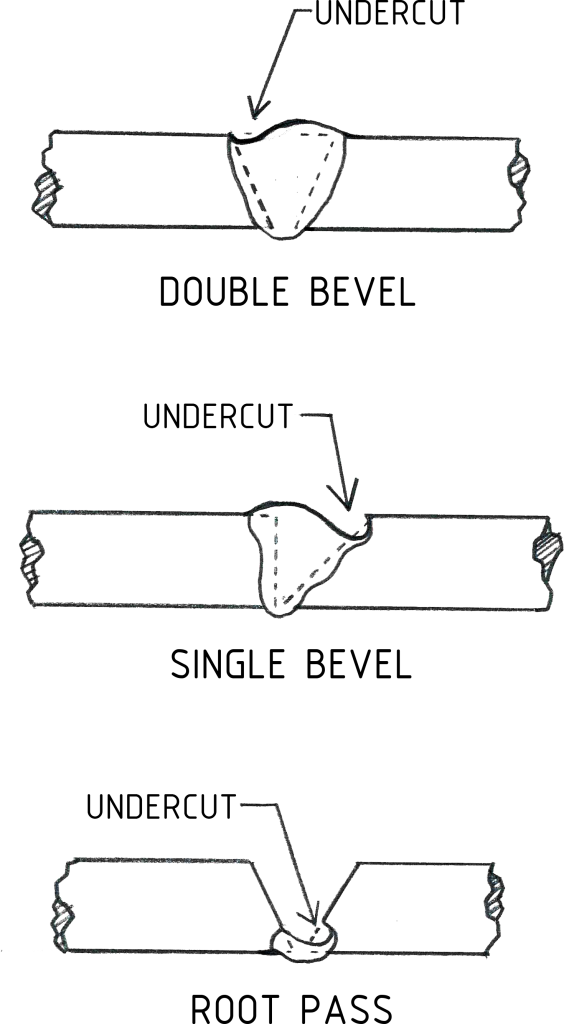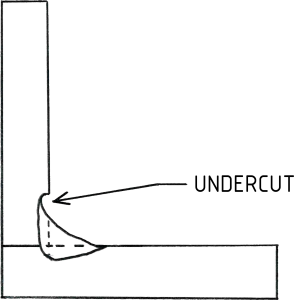63 Undercut
Undercut is a groove melted into the base metal adjacent to the weld toe or weld root and left unfilled by weld metal. Faulty electrode manipulation, excessive welding current, excessive arc length, and slow travel speed cause undercut.

Undercut of a completed weld is undesirable because it produces a stress concentration that reduces impact strength and fatigue resistance. Undercut is detected by visual examination (VT) in groove or fillet welds. VT is the simplest and most effective way of detecting and measuring undercut against the particular fabrication standards or codes.

Radiographic examination (RT) may also detect undercut in groove welds, where it appears as a dark line, sometimes broad and diffuse, along the edge of the weld.
Undercut Prevention
Undercut is prevented by the following methods: pausing at each side of the weld bead when using the weave bead technique; using proper electrode angles, using proper welding current for electrode size and welding position; reducing arc length; and increasing travel speed.
Undercut of the sidewalls will in no way affect the completed weld if it is repaired before the next bead is deposited in that location.
To repair an undercut, lightly grind its length to clean out any foreign material. Then apply a smaller weld deposit to fill in the undercut prior to starting the next weld. If the undercut is slight, however, it is possible for the welder to estimate how deeply the weld will penetrate and fill the undercut with the next pass. Undercut is sometimes repaired by grinding and blending or welding. Grinding should be performed with a pencil-type grinder.

